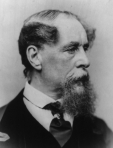The Others and the Extras: The Importance of Secondary Characters
A guest post by Scott D. Southard
 Oh, the lament of the poor minor character.
Oh, the lament of the poor minor character.
Pushed to the sidelines, knowing full well they are not the focus of the story.
Love is probably not in the cards for them. They are the ones injured in the line of duty or acting as a living joke. Characters created merely to be a soundboard for the main characters. Or someone for the reader to compare the main character in the universe of the story. A tool, nothing more.
It would be a thankless life, I am sure, if they were real. Probably spent at the refreshment table, trying not to fall asleep as they wait for their big moment in the sun. And then the scene arrives – a few quick jokes, maybe a heart-to-heart – and then they are back at the table, once again snacking on one too many cookies. Waiting…
Everything about the secondary character revolves around the main character. An existence built solely around another’s experiences. Even if a secondary character dies, it is a moment for the main character to reflect upon their own life decisions. (Unless they are an evil secondary character, then usually they are left on the floor somewhere, discarded, a bloody remain for someone else to find later – but we never read about or see that bit in movies or television.)
Yet, for me, the secondary characters are important. Because, like a missed plot point, an awkward description or a writing oops, they have the power to rip me out of a story, leaving me on the sidelines of a tale just like them.
*
 Charles Dickens was the master of the side characters. His book are filled with marvelous secondary characters, and in each book, each chapter almost always seems to introduce a new one. They can be comic, yes, but also tragic, surprising and powerful. Each of them are wonderfully layered. (Well, honestly, maybe not in The Pickwick Papers, but it was his first book so we will give him the benefit of the doubt.)
Charles Dickens was the master of the side characters. His book are filled with marvelous secondary characters, and in each book, each chapter almost always seems to introduce a new one. They can be comic, yes, but also tragic, surprising and powerful. Each of them are wonderfully layered. (Well, honestly, maybe not in The Pickwick Papers, but it was his first book so we will give him the benefit of the doubt.)
It is an art to create a throng like that. Consider a book like Oliver Twist, where next to his gathering oddities, our hero, the little Oliver (the heart of the tale), is almost drab in comparison. The Artful Dodger, Mr. Bumble, Fagin, the terrifying Bill Sykes, the tragic Nancy… Yes, in Dickens the minor characters are what make his books.
Now there is a good chance that this was all just part of Dickens’s incredible talent, and we can each only dream of having this ability to create so many credible secondary characters, but there are things each of us can do to make our own just as rich, just as powerful, and just as important.
Take the Time
No one ever said writing a book was easy. It is an art form, like playing the piano or painting or dancing. And like those art forms, it should be difficult. Writing a book should be the hardest thing you ever attempt to do.
I’ve been reading a lot of contemporary fiction these days and one thing that seems to come up again and again for me is the lack of substance in the secondary characters. Yes, I am speaking in broad terms, but they feel like supporting members of a sitcom sometime – hired merely to appear and make a few quick lines and leave.
Writers, it’s unfair to the character, and it is unfair to your readers.
That’s not to say your supporting characters can’t come in to do the few lines, but make sure they are fully realized so the “performance” feels real. This means, taking the time to break down the character, finding their own plot, their own story. You might, of course, not use any of this in the book, but the character will feel more real for you if you go to this trouble. And if all of the characters feel real to you, they will feel real for your audience as well.
One of my favorite suggestions for writers is to go out and listen to people. Sit at a coffee shop or a restaurant and simply observe the people around you. (Don’t stare.)
- Listen to the meter of a person’s voice. Is there a beat or a rhythm to their conversation?
- How do they breath in a speech, or take their pauses?
- How do they laugh? (What does the laugh sound like?)
- How do they sit? Do they lean forward or back? Do they use their hands or arms a lot while talking?
Each of these descriptions, when added to a character (no matter how minor) will make them as real as the person you are spying on… I mean observing.
Avoid Stereotypes
I hate stereotypes.
All good writers should hate stereotypes.
Many times when you bring up the term, people think of it on purely racial or sexual lines, but that is only one part. There are so many different kinds of stereotypes in our world, from the dumb jock and cheerleader to the corrupt politician. The fact is, if you (the writer) can’t see a character beyond a two-word description, chances are you have a stereotype right there.
And remember, there is also a good chance if you are using a stereotype, chances are you are insulting someone, somewhere. No one wants to insult a reader.
Like my discussion above, this is another example of taking the time to fix a situation. Yes, when we create a first draft of a book, not everything is as fleshed out as it should be (even the characters), but it is in the re-reading of the manuscript, the continuous editing that characters should become something more.
And here is the hard truth: Sometimes a character is wrong for the “role” we create for them. If after editing and editing and editing, a character still seems to you like a shadow of a real person, edit them out. Maybe create a new character to fill that position. Chances are if a character doesn’t seem to step out of the bounds of a two-dimensional role, he might never do it – especially if they began life as a stereotype.
Everyone Grows
 When I was writing my new novel A Jane Austen Daydream I could not stress enough over character development. This is not surprising when one considers my main character is Jane Austen. Along with Shakespeare and Mark Twain, I can’t imagine a more foreboding literary figure to capture on paper. And in the book, I try to re-imagine her life as she might have wanted it, with plots and characters reminiscent of her own books.
When I was writing my new novel A Jane Austen Daydream I could not stress enough over character development. This is not surprising when one considers my main character is Jane Austen. Along with Shakespeare and Mark Twain, I can’t imagine a more foreboding literary figure to capture on paper. And in the book, I try to re-imagine her life as she might have wanted it, with plots and characters reminiscent of her own books.
One thing I have always admired in Austen’s novels is character growth. In Pride and Prejudice, Darcy and Elizabeth both grow, but other characters do as well. This is not true for all of them, of course. (The silly mother is still the silly mother.) Remember though, character growth doesn’t always mean growing into something better or learning a lesson, it just means growing. Being different than they were on page one.
For my novel, knowing the mountain I was attempting to climb in making a book like this, I agonized over each character. I have the notebooks to prove it. And by the time I finished, I could look each character straight in the eye. They were that real for me.
Remember, we are all different than we were last year or even earlier in the week. Take the time to ask how the story impacts and changes each of the players. No one lives in a vacuum, not even fictional characters.
Quirks Are Good
We are all quirky.
We all have them even though we don’t always want to admit it. Some would say this writing blog is my quirk. So be it, I embrace the quirkiness of it.
One thing Charles Dickens did very well is give his characters quirks that moved them into the realm of literary legend, no matter how small. It might be a unique speech pattern or a bizarre passion for something, but they became real to us, even sometimes these quirks can become heartwarming.
Consider the minor character of Mr. Wemmick from Great Expectations. An attorney’s clerk by day, at night he would go home to a castle he made out of his cottage. It is a charming and fun insight into a character that today in a book might be simply cast as “Clerk 1.” An extra to be forgotten.
Now, I’m not saying you need to do something that extreme with a character and build a castle, but consider this…. Let’s say you have a character that is a clerk:
- What is on his desk? Anything odd or unique? Is the desk messy or clean?
- Does he have a wallpaper on his computer? What is it a picture of?
- How does he dress?
- How does he act around the others in the office? Shy, timid? Or bold? Inappropriate?
- Is there anything on the wall of his office? Quotes? Pictures? Scribbled notes?
And those are only a few suggestions. But just starting with questions like that can grow a character into someone who is more than a vessel to simply answer a hero’s (or heroine’s) questions. Clerk 1 can come alive!
*
In someone else’s story we are all minor characters.
It is a bleak thought, wondering if we are the comic relief or unintentional scoundrel. Whatever the case, each of us, every single one of us, is a full-fledged individual with aspirations, hopes, a past, a future. Giving those to your characters, every single one of them, will make them as human as you and me.
Your audience (and your characters) will thank you.
*
Scott D. Southard is the author of four novels published in the last few years, A Jane Austen Daydream, Maximilian Standforth and the Case of the Dangerous Dare, My Problem With Doors and Megan. You can find them via his Amazon author page or on Google eBooks. He is also an editor with rebeccatdickson.com. Got a manuscript that needs a special touch? Contact us and ask for Scott.



Leave a Reply
Want to join the discussion?Feel free to contribute!